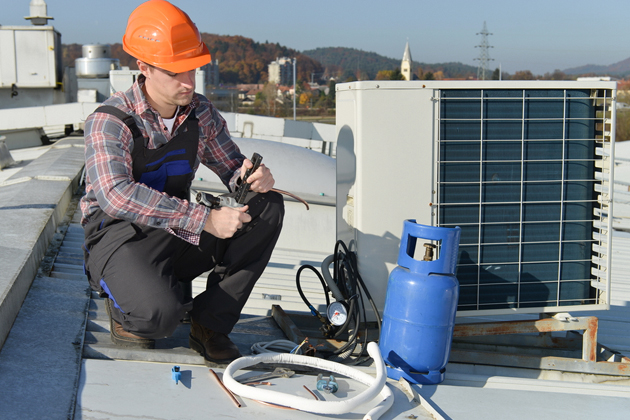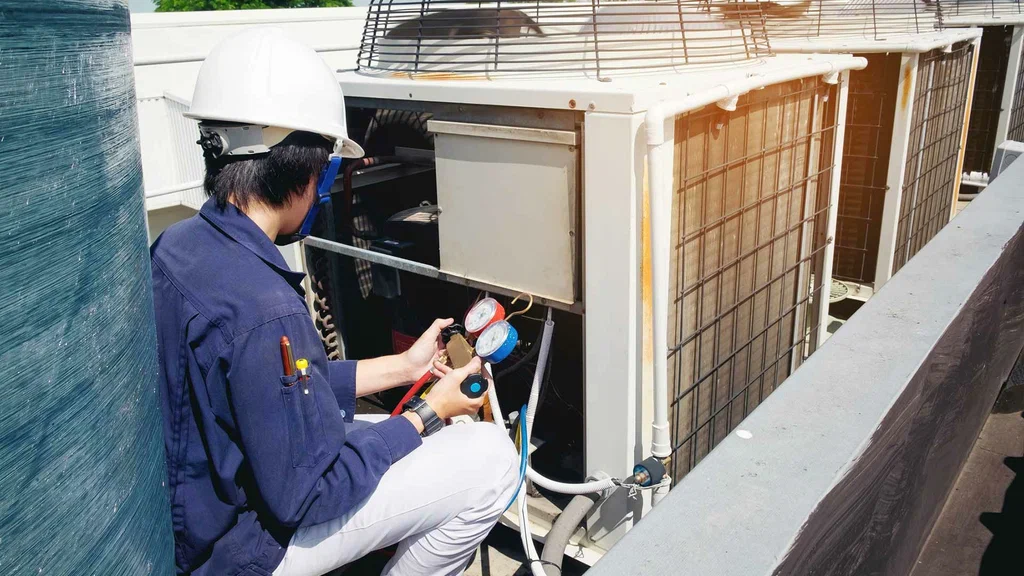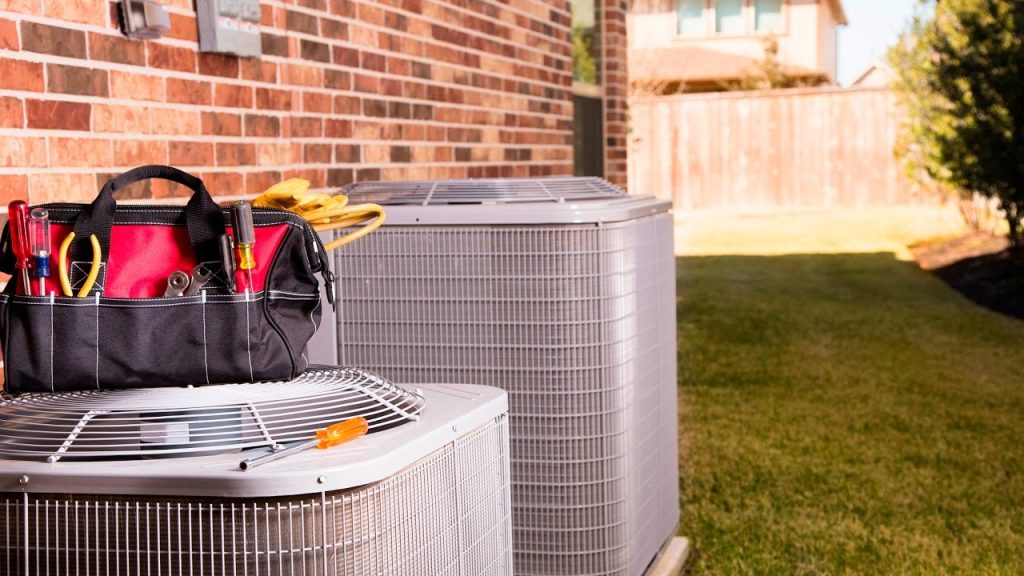Explore the essentials of heating, ventilation, and air conditioning systems. Learn how they work and why they’re vital for your home comfort.
HVAC is a term that refers to the system responsible for heating, ventilation, and air conditioning in homes, businesses, and other types of buildings. These systems play a critical role in maintaining comfortable temperatures, improving air quality, and ensuring the overall health and safety of indoor environments. Whether you’re considering installing a new HVAC system, upgrading an existing one, or simply curious about how they work, understanding the components and functionality of HVAC systems can help you make more informed decisions. In this article, we’ll dive into the essential aspects of HVAC systems, common maintenance tips, and why they’re important for your home or business.
What is HVAC?
HVAC stands for Heating, Ventilation, and Air Conditioning. It’s an integrated system that controls and regulates the temperature, humidity, and air quality in a building. HVAC systems are commonly used in residential homes, commercial properties, and industrial facilities to ensure comfort and proper air circulation throughout the year.
- Heating: Provides warmth in colder months through systems like furnaces, heat pumps, and boilers.
- Ventilation: Ensures fresh air circulates within the building by removing stale air and introducing outdoor air. This can be achieved through natural ventilation (open windows, vents) or mechanical ventilation (fans, ductwork, air handling units).
- Air Conditioning: Cools the indoor environment, which is especially essential during hot summer months. Air conditioners and heat pumps are commonly used for cooling purposes.
Keywords: HVAC systems, heating and cooling, air conditioning, ventilation, HVAC installation, indoor air quality
How Does an HVAC System Work?
An HVAC system is typically composed of several interconnected components that work together to regulate temperature and improve indoor air quality. These components include:
- Thermostat: A device that controls the temperature of the system by setting the desired indoor temperature. It communicates with the HVAC system to maintain the selected climate.
- Furnace: The furnace is responsible for heating the air that circulates through your home or building. It burns fuel (such as gas, oil, or electricity) to generate heat and then distributes the warm air via ducts.
- Air Conditioner: The air conditioner cools the air in the building, especially during hot weather. It works by removing heat from the indoor air and releasing it outside.
- Heat Pump: A heat pump is a versatile component that can both heat and cool a space. During colder months, it draws heat from the outside air and brings it indoors. In warmer months, it works like an air conditioner, removing heat from the building and releasing it outdoors.
- Ductwork: Ducts are responsible for distributing heated or cooled air throughout the building. The duct system is connected to the furnace, air conditioner, or heat pump, and it directs airflow to each room.
- Air Handler and Blower: The air handler is a key part of the HVAC system that contains the blower fan, which circulates air throughout the ducts. It helps maintain consistent airflow and temperature regulation.
- Filters: Air filters trap dust, dirt, and other particles in the air, improving indoor air quality. They need to be cleaned or replaced regularly to ensure optimal performance of the HVAC system.
- Ventilation: Ventilation systems work to maintain a fresh supply of air, preventing indoor air from becoming stagnant. Proper ventilation is essential for controlling humidity, preventing mold growth, and removing harmful gases like carbon monoxide.
Keywords: HVAC components, how HVAC works, furnace, heat pump, air conditioner, ductwork, air filtration, air handler
Types of HVAC Systems
There are several types of HVAC systems available, and the choice of system will depend on factors like the size of the building, the climate, energy efficiency preferences, and budget. Below are some of the most common types of HVAC systems:
1. Central HVAC System
The central HVAC system is one of the most widely used systems in residential and commercial buildings. It uses a central furnace or air conditioning unit to heat or cool the air, which is then distributed through a network of ducts to various rooms. Central systems are ideal for larger buildings and provide uniform temperature control.
Keywords: central HVAC, central heating and cooling, central air system, ducted HVAC
2. Ductless HVAC System (Mini-Split)
A ductless HVAC system, also known as a mini-split, is an efficient alternative for homes or buildings without ductwork. This system uses individual air handlers installed in different rooms that are connected to an outdoor unit. Ductless systems are often more energy-efficient than traditional central HVAC systems, and they allow for zoning (different temperatures in different rooms).
Keywords: ductless HVAC, mini-split system, ductless air conditioning, zone heating and cooling
3. Hybrid HVAC System
Hybrid HVAC systems combine a furnace with a heat pump. The heat pump can be used for cooling in the warmer months, while the furnace takes over heating duties during cold weather. Hybrid systems are ideal for areas with moderate climates because they offer energy efficiency and the ability to switch between heating sources depending on outdoor temperatures.
Keywords: hybrid HVAC, hybrid heating system, heat pump and furnace, energy-efficient HVAC
4. Geothermal HVAC System
Geothermal systems use the earth’s natural heat to provide heating and cooling. This type of HVAC system takes advantage of the relatively constant temperature beneath the surface of the earth to heat or cool the building. Geothermal systems are known for their energy efficiency and minimal environmental impact, but they can be expensive to install due to the need for drilling or digging.
Keywords: geothermal HVAC, geothermal heating and cooling, eco-friendly HVAC, energy-efficient HVAC system
5. Window Air Conditioning Systems
For smaller spaces or individual rooms, window-mounted air conditioning units are a common option. These systems are simple to install and are often more affordable than central or ductless systems, but they are limited to cooling only one room at a time.
Keywords: window air conditioner, room air conditioning, window AC units, cooling system
HVAC Maintenance Tips
Proper maintenance is crucial to ensuring that your HVAC system runs efficiently, has a longer lifespan, and helps reduce energy costs. Regular HVAC maintenance helps prevent costly repairs and ensures a comfortable environment. Here are some key maintenance tips:
- Change Filters Regularly: Air filters should be replaced or cleaned every 1–3 months. Clogged or dirty filters can reduce airflow and lower the system’s efficiency.
- Clean the Coils: Clean the evaporator and condenser coils to prevent them from becoming dirty, which can affect the system’s cooling ability.
- Check Refrigerant Levels: Ensure that the refrigerant levels are adequate to maintain optimal performance of the air conditioning system. Low refrigerant can reduce cooling efficiency and cause system failure.
- Inspect Ducts and Seals: Inspect the ductwork for leaks, holes, or damage, as this can lead to air loss and reduced efficiency.
- Schedule Annual Professional Maintenance: Have a professional technician perform regular HVAC inspections and tune-ups, including checking electrical components, lubricating moving parts, and testing system efficiency.
Keywords: HVAC maintenance, HVAC repair, change air filters, clean HVAC system, HVAC tune-up, annual HVAC inspection
Benefits of an Efficient HVAC System
A well-functioning HVAC system offers several benefits, including:
- Improved Indoor Air Quality: Proper filtration and ventilation ensure clean, fresh air by removing dust, allergens, and pollutants.
- Energy Efficiency: A well-maintained HVAC system uses less energy, lowering your utility bills while reducing your environmental footprint.
- Comfort: An efficient HVAC system helps maintain comfortable temperatures year-round, creating a more pleasant living or working environment.
- Longer Lifespan: Regular maintenance and timely repairs extend the lifespan of your HVAC system, helping you avoid premature replacements.
- Better Control: Many modern HVAC systems offer smart technology that allows you to control the system remotely via mobile apps, improving convenience and comfort.
Keywords: energy-efficient HVAC, indoor air quality, HVAC system lifespan, HVAC smart control, HVAC benefits
Conclusion
An HVAC system is an essential component for maintaining a comfortable and healthy indoor environment. By understanding how HVAC systems work, the different types available, and the importance of regular maintenance, you can make informed decisions about the heating, cooling, and ventilation needs for your home or business. Whether you’re looking to install a new system or upgrade an existing one, consider consulting an HVAC professional to ensure you choose the best solution for your needs and budget.



